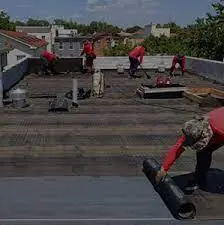Flashing plays a critical role in protecting the most vulnerable areas of your roof, including chimneys, skylights, roof valleys, vents, and intersections where different roof planes meet. Its main function is to direct water away from these joints and seams, preventing leaks that can lead to structural damage, mold growth, and interior water intrusion. Over time, however, flashing can deteriorate due to exposure to sun, rain, snow, and temperature fluctuations. Common issues include cracking, rusting, warping, or becoming loose, all of which compromise the effectiveness of the roof’s protective barrier. Even minor flashing problems, if left unaddressed, can result in significant water damage and costly repairs.
Professional flashing repair begins with a thorough inspection to identify all areas of concern. Damaged sections are replaced with high-quality materials suited to the roof type and local weather conditions. Resealing of joints and edges ensures that water is properly directed away from sensitive areas, while careful attention to installation prevents gaps and weak points that could allow moisture to penetrate. In some cases, additional protective measures, such as metal flashing coatings or waterproof membranes, may be applied to enhance durability and longevity.
“Fixing chimney leaks safeguards interior spaces and structural integrity.”

Proper flashing repair not only stops current leaks but also helps prevent future damage, maintaining the structural integrity and overall performance of the roofing system. By addressing flashing issues promptly, homeowners can protect their property, extend the lifespan of their roof, and maintain peace of mind knowing that their home is safeguarded against water intrusion and weather-related damage. Regular maintenance and professional inspections of flashing components are essential to ensure that this critical part of the roof continues to function effectively for many years.


